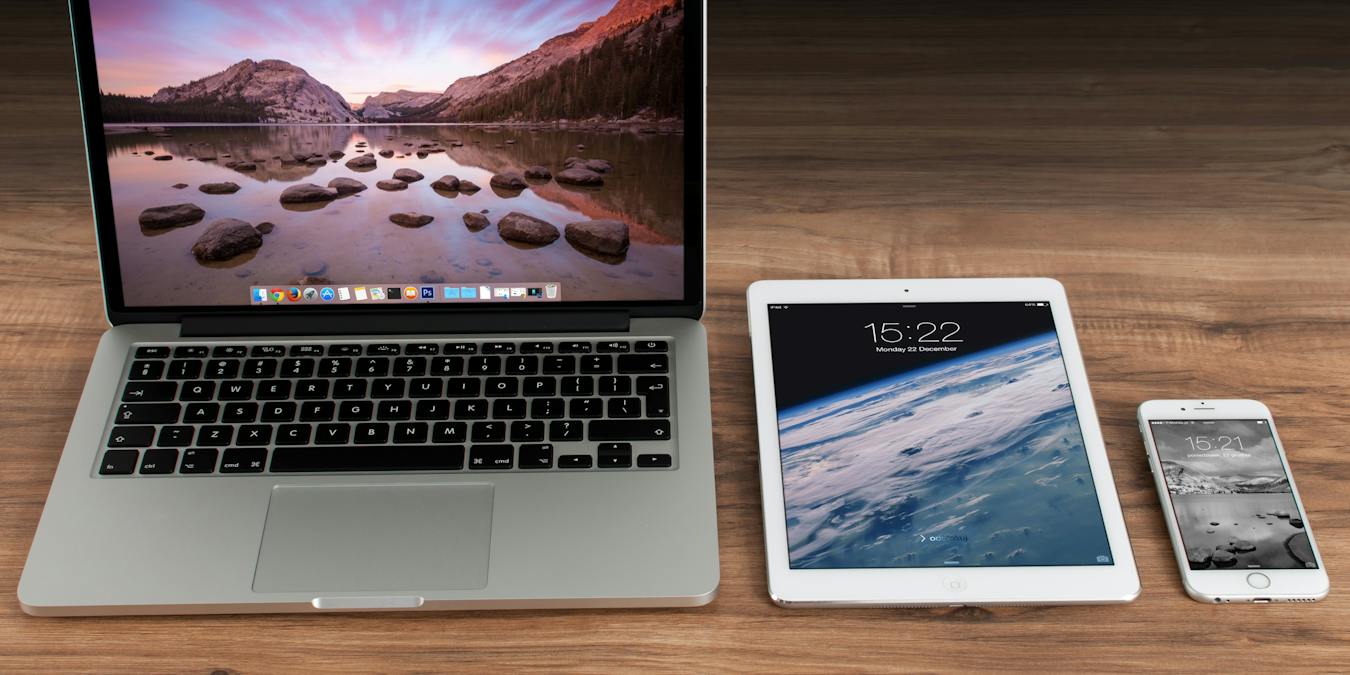
Unlike Windows, macOS provides limitless customization options for everything from your wallpaper to the Control Center. If you want to customize the Mac desktop to reflect your personal aesthetic or make a bold statement, these step-by-step instructions will help you transform nearly every aspect of how macOS looks when you boot up your device.
Find a New Wallpaper for Your MacBook
It is not the most exciting customization method, but swapping out the default wallpaper is a good starting point to customize the Mac desktop. Apple includes a number of wallpapers, but you can also add your own. Wallpapers are easy to find on sites like WallpaperUp, InterfaceLIFT, and Unsplash. Once you have downloaded a wallpaper of your choice, enabling it is super-quick.
Start by right-clicking on your desktop and selecting Change Wallpaper.
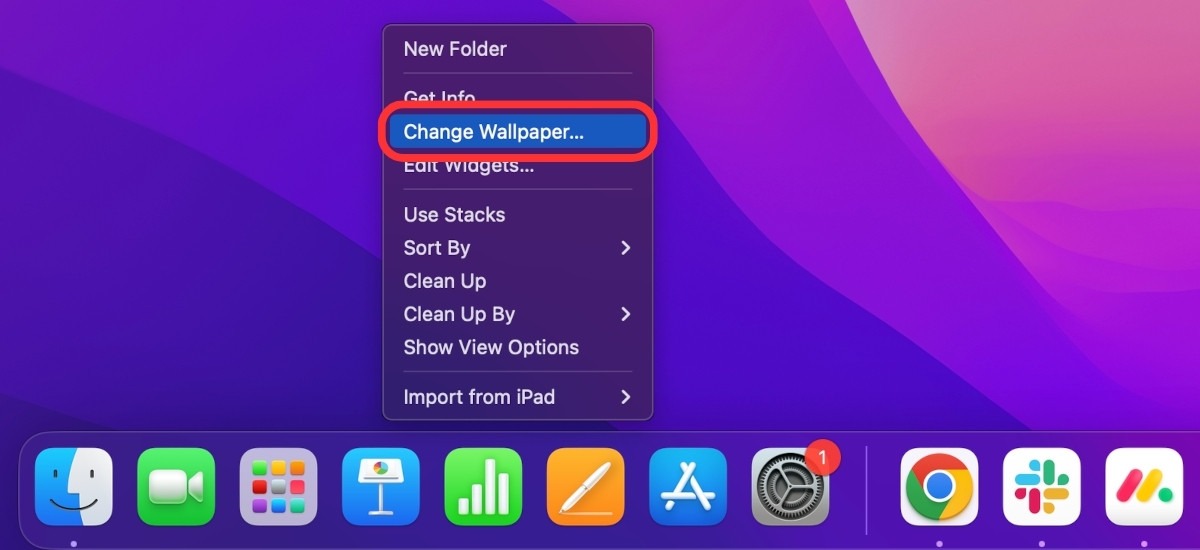
The System Settings will open to the Wallpaper tab. From here, either choose from one of the included desktop backgrounds (including dynamic wallpapers) or select a custom image.
To choose your own image, click on Add Photo -> Choose.
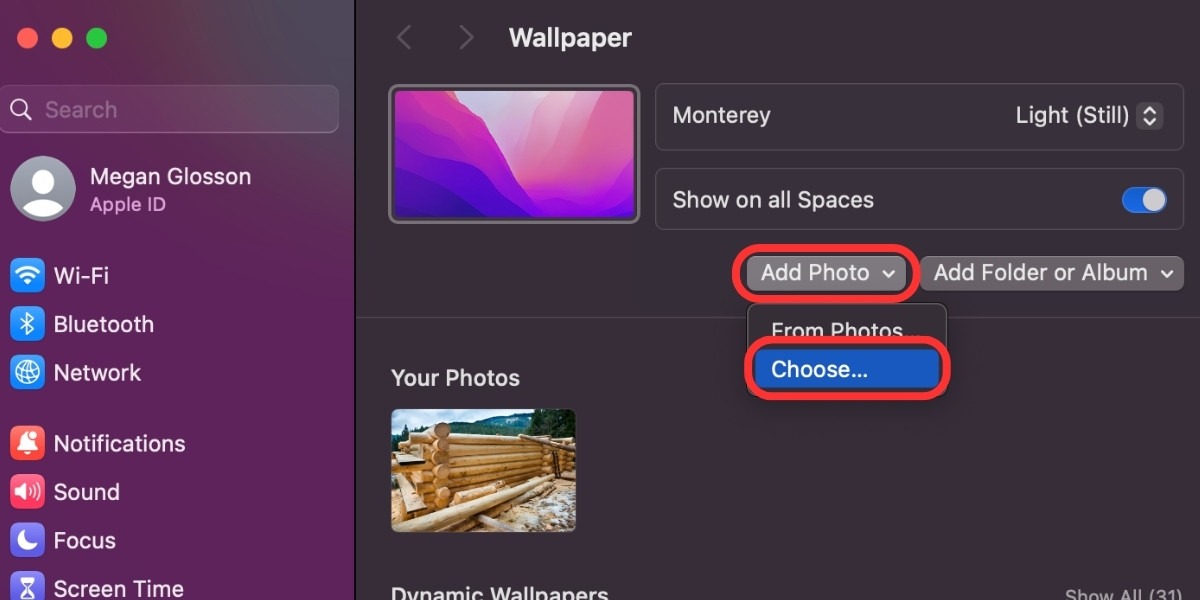
Locate the folder where you saved your new wallpaper image, select the image, then click Choose to select the image as your desktop wallpaper.
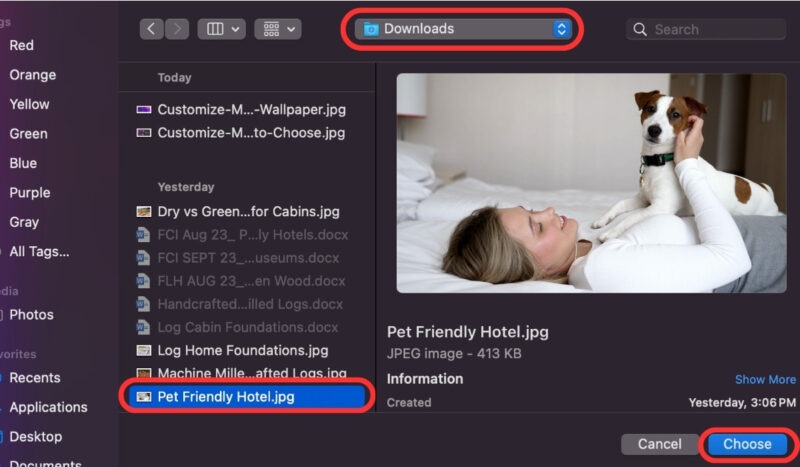
Tip: Adjust your settings so your Mac won’t randomly change your wallpaper.
Customize the Control Center
You can customize your Mac even further by changing certain aspects of the Control Center. Go to System Settings -> Control Center to access all the customization options.
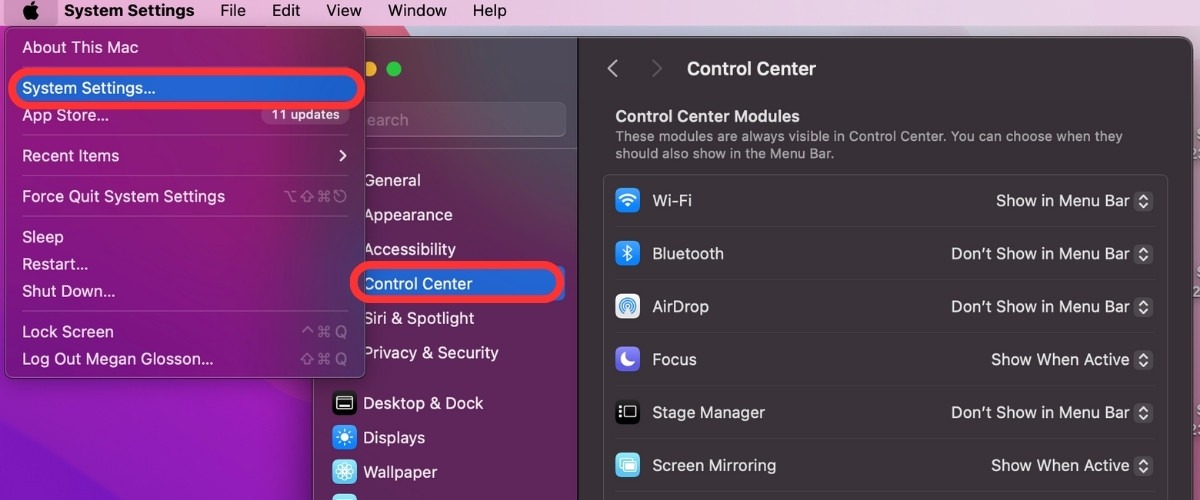
The box will list all the modules within Control Center, including Wi-Fi, Bluetooth, AirDrop, Focus Mode, and more. Go through each available module, and select the drop-down menu for each one. Choose between three available options: Always Show in Menu Bar, Show When Active, and Don’t Show in Menu Bar. Repeat this step with each module until you are happy with the setup.
Note: you can also customize Mac sound settings.
Add Widgets to Your Mac Desktop
For anyone who uses widgets on their iPhone home screens, this macOS feature should feel familiar. To access your widgets and edit them, click on the date in the top-right corner of the desktop, then press Edit Widgets at the bottom of the screen.
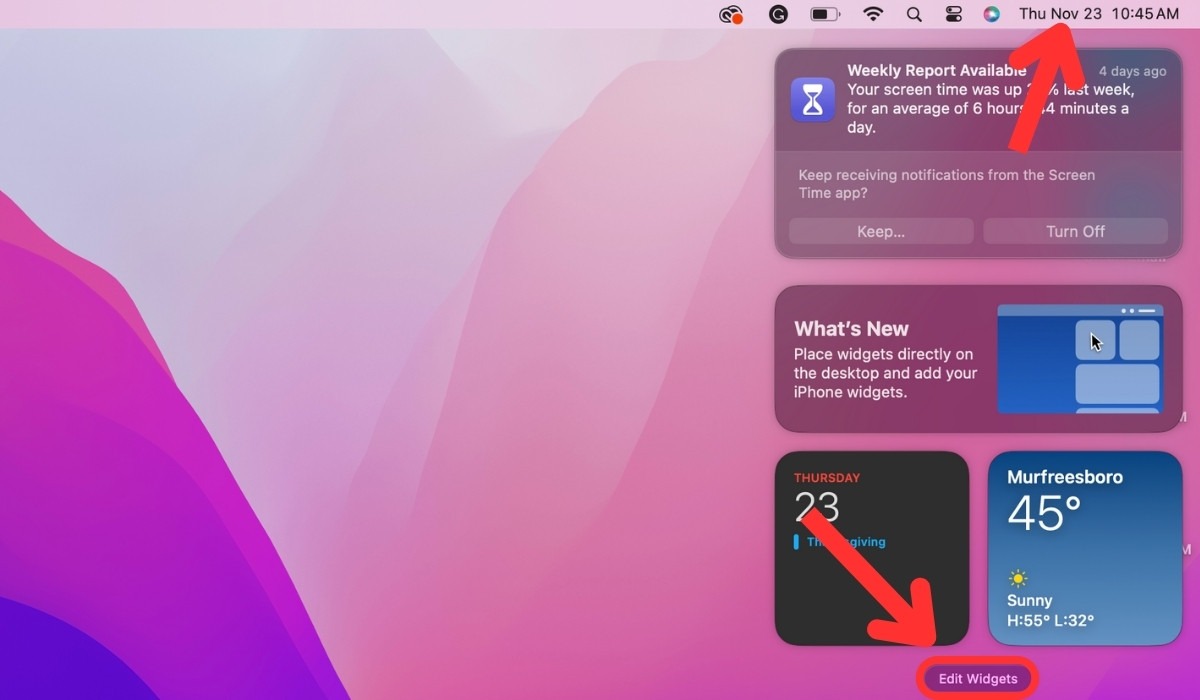
Once you do this, a gray screen will show all of the available widgets for your Mac. Browse widgets by category, or use the search bar to locate specific items. When you locate a widget you’d like to add to your desktop, click on it.
After you have added all of the widgets you’d like, you can customize the widget display by dragging the widgets around the screen. You can also remove widgets by clicking the minus sign (–) in the top corner of the widget.
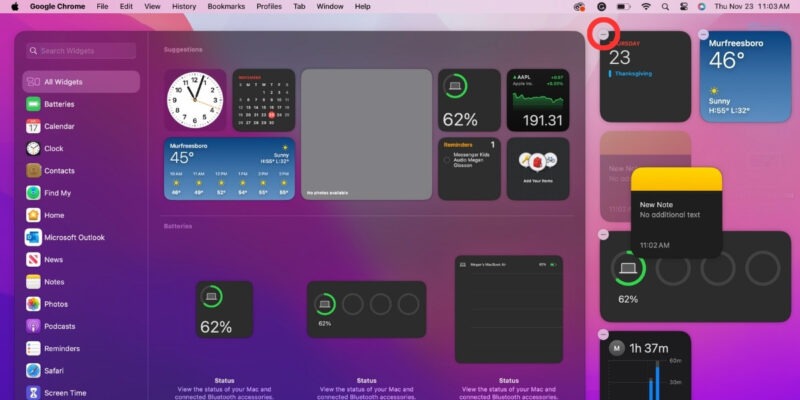
Personalize the Dock
The macOS Dock makes it easy to access commonly used applications, resume open projects, or continue browsing the Web. If the default Dock settings don’t offer ideal options for you, you can customize your Dock.
To customize your Dock, go to System Settings -> Desktop & Dock.
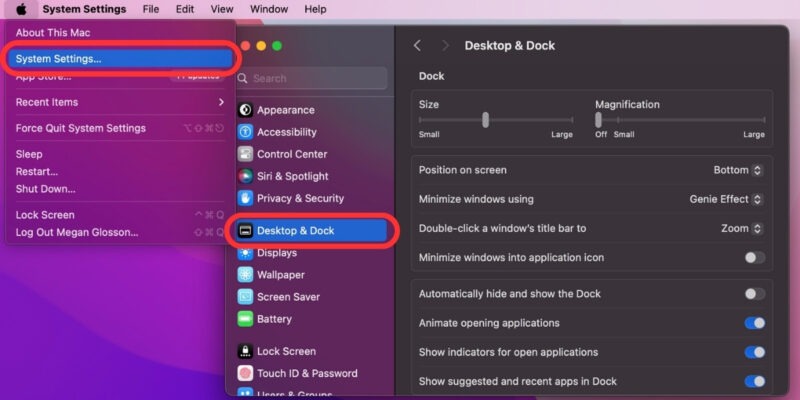
From here, you can customize any of the following options:
- Size: use the slider bar to make the Dock smaller or larger based on your preferences.
- Magnification: move your mouse over the Dock and use the slider bar to adjust the amount of magnification on icons.
- Position: use the drop-down menu to choose the position of your Dock on the desktop (bottom, left, or right).
- Minimize Windows Using: choose whether you want windows to minimize to by using the Genie Effect or Scale Effect.
- Double-Click: use the drop-down to set whether double-clicking on a window’s title bar makes it zoom, minimize, or do nothing.
- Minimize Windows Into Application Icon: toggle whether you want windows to minimize into the application icon in the Dock, or minimize as an independent window.
- Hide & Show: toggle whether you want the Dock to hide by default or always show.
- Animate: toggle to turn on animations (bouncing) when you open an application from the Dock.
- Indicators: toggle to show indicators (dots) below open applications in the Dock.
- Suggested & Recent Apps: toggle to show recently-used and commonly-opened applications in your Dock.
When you’re done working with your Dock, you can move on to customizing your macOS menu bar.
Change Your Mac’s Login Screen
Thanks to more recent macOS updates, you can change the picture displayed on your Mac’s login window. The image you choose will also show for your Apple ID and contact card.
To change this, go to System Settings -> Users and Groups, then click on the picture next to your display name.
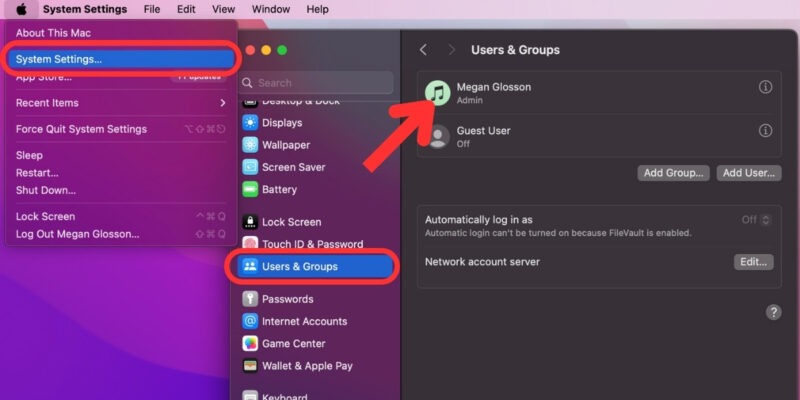
When the selection box opens, choose whether you want a Memoji, Emoji, or Monogram. You also have the option to take a photo using your Mac camera or an image from your Photos app.
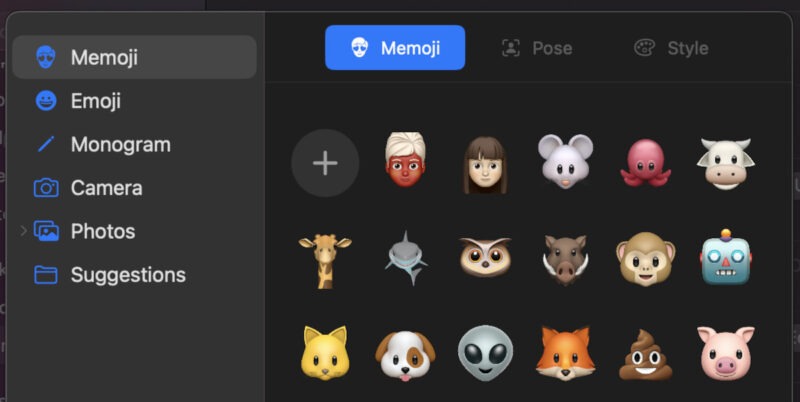
Choose a New Style for Your Mac Icons
Personalizing your Mac desktop goes far beyond choosing a wallpaper. You can also customize desktop icons and folders in a few simple steps.
To change the icon for a file or folder on your desktop, copy the replacement image to your clipboard, highlight the item you want to change, and choose File -> Get Info.
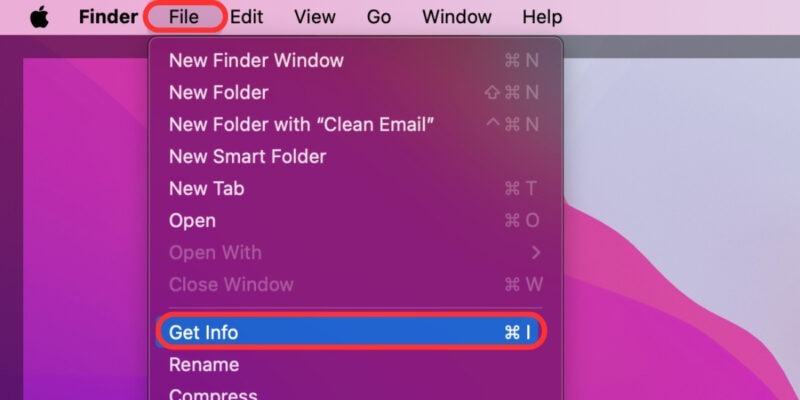
When the information window opens, click on the small icon in the upper left, then choose Edit -> Paste in the menu bar.
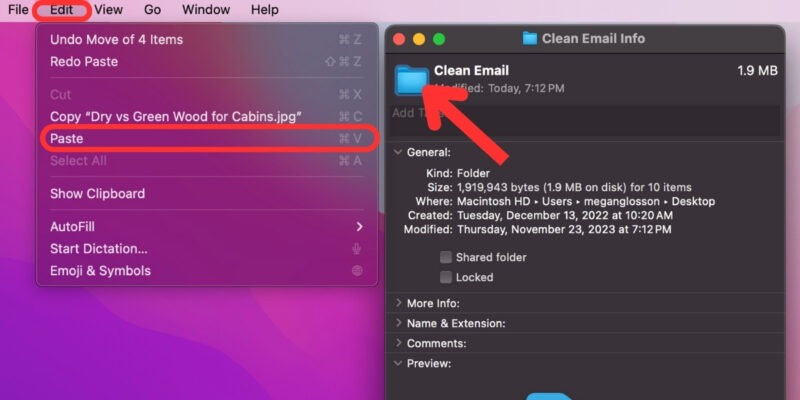
If a generic JPEG or PNG logo displays instead of the picture you selected, make sure you copied the image correctly (copying the contents, not the file) before pasting.
To change icons for applications, copy the image to your clipboard, then go to Finder -> New Finder Window, and choose Applications. Highlight the application, then choose File -> Get Info. When the information window opens, click on the small icon in the upper left, then choose Edit -> Paste in the menu bar.
Note: some applications will require you to permit Finder to make these changes. You must either use your fingerprint or enter your password to perform this change.
Pick a Custom Color Scheme
With the introduction of macOS Mojave, Apple allows users to mix and match a variety of color schemes. This gives you complete control to customize Mac desktop accent colors and make your desktop fit your aesthetic. In more recent versions of macOS, Apple has added other color customization options, such as Dark Mode, Cursor colors, and replacing backgrounds in Finder.
To change any of these features, go to System Settings -> Appearance. Then, follow the additional directions in each section based on the color customizations you wish to perform.
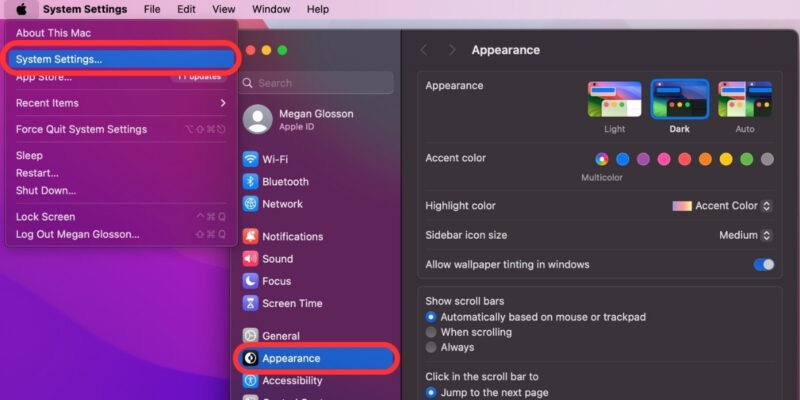
Light or Dark Mode
When you open the Appearance menu, you have the option to choose between Light, Dark, and Auto Mode. Click on your desired option.
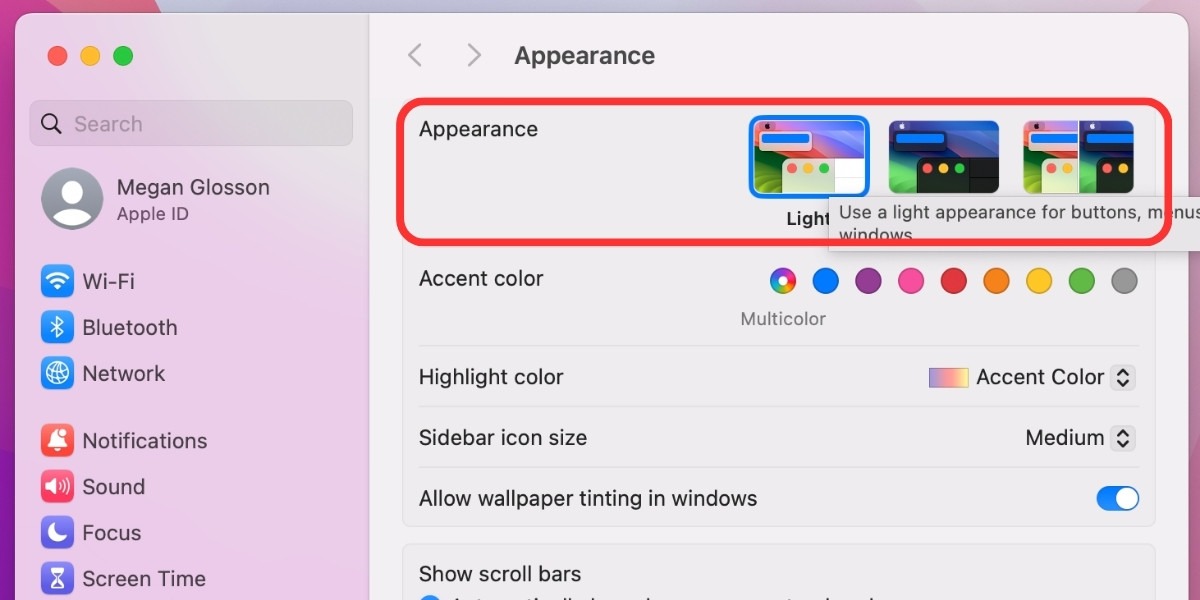
You can also make the Dark mode even darker with these tricks.
Change the Accent Color
After you choose the mode, you can next select the accent color. This will change the color that shows when you highlight items or navigate menus. Choose from one of nine color options, then select whether you want the highlight color to be the same as the accent color or different. Click to select the options you want.
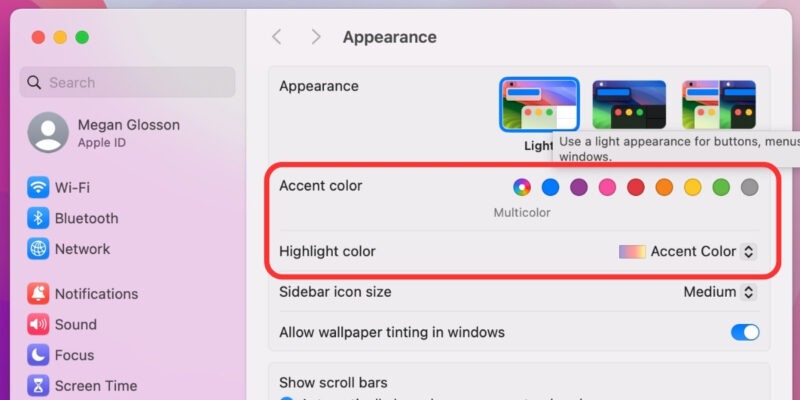
Change the Cursor Color
You can also further customize your Mac desktop by changing the cursor color. Navigate to System Settings -> Accessibility -> Display.
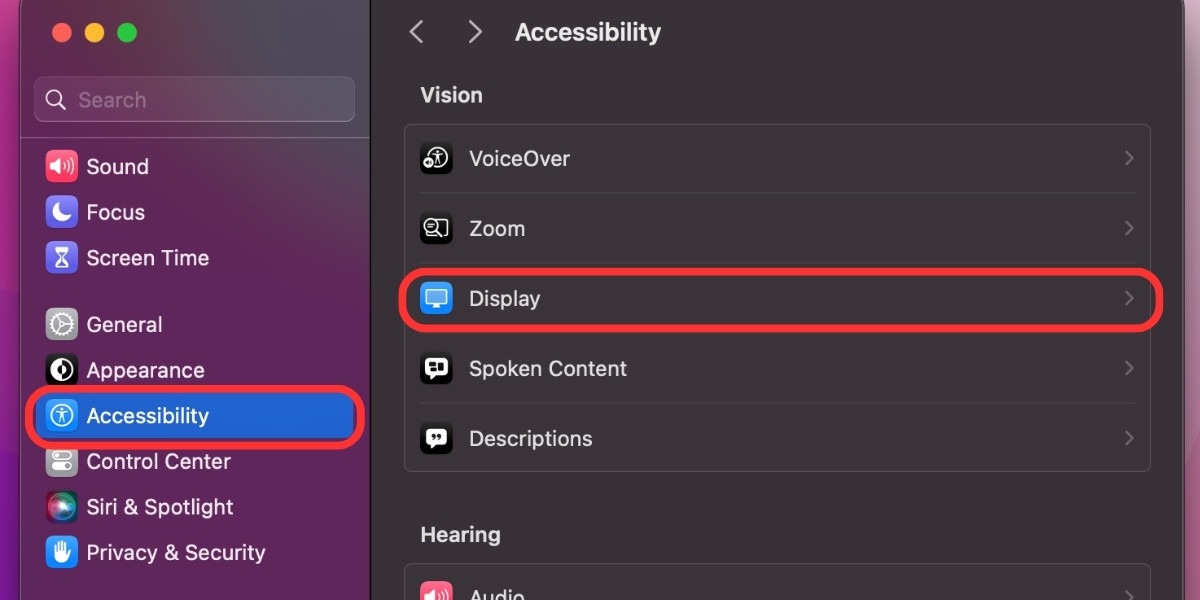
Scroll down to Pointer, and choose colors for both the Pointer Outline and Pointer Fill. Click on the color swatch to fully customize the color.
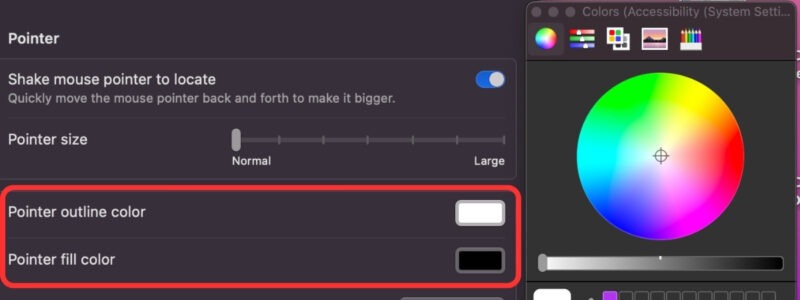
Replace Backgrounds in Finder
If you want to customize the macOS appearance further, replace the background that displays anytime you open a Finder window. First, make sure Finder is set to Icon View (choose View -> As Icons from any folder). Then, follow these steps:
Go to Finder, open the folder you wish to customize, then choose View -> Show View Options in the menu bar. Look for the section titled Background, then choose Color or Picture. Choosing Color will open the color selection tool, while Picture will give you a box to drag and drop an image.
Change the Start Page in Safari
After years of limitations, Apple is finally allowing its users to personalize the start page in Safari. This includes setting your own background, tweaking Favorites, Siri Suggestions, Reading List, iCloud tabs, and your own privacy report.
When you open Safari, click on the Settings icon in the bottom right to open a menu with a variety of customization options for the start page.
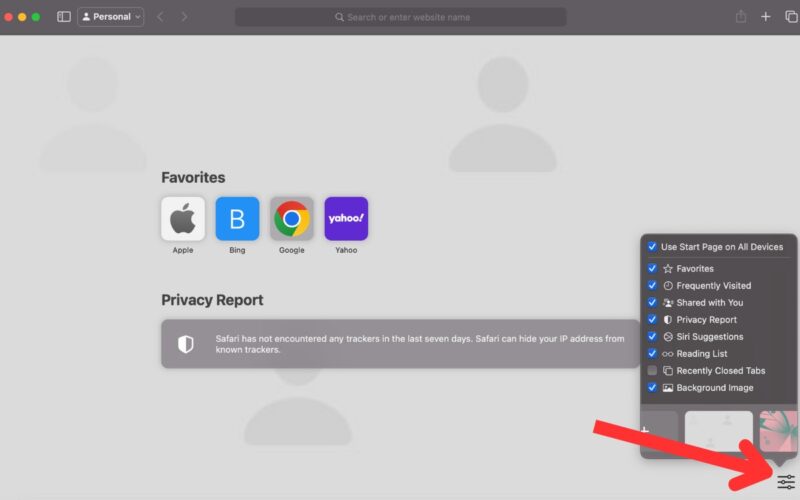
Most of the options, such as Favorites and Recently Closed, have a checkbox to click to add them to your start screen. You can, however, select the background image by choosing one of the provided options, or pressing the box with the plus sign (+) and choosing a custom image.
To make other changes to your browser, check out our Safari customization guide.
Personalize Individual Apps
With the most recent macOS update, personalization doesn’t just end with your desktop. You can also personalize some of the apps you use on a daily basis.
Apps you can personalize include:
- Apple Mail – Go to Mail -> Settings -> Fonts & Colors to customize your font and color settings.
- Terminal – Go to Settings -> Profiles to customize the theme.
- TextEdit – Go to View to customize Dark Mode.
- Notes – Go to Notes -> Settings to control Dark Mode.
Frequently Asked Questions
How do I make my Mac look like Windows?
Are there any apps that will help me customize my Mac?
There are several great third-party apps that can help you further customize your Mac desktop and other aspects of macOS. For instance, Widgetter lets you customize your desktop, while Keyboard Maestro lets you establish automations.
How do I reset my Mac to its default settings?
If you want to fully restore your Mac to default settings, perform a factory restore. You can also undo some macOS customizations by pressing Undo after performing them, or follow the steps to redo the original settings.
Image credit: Pexels. All screenshots by Megan Glosson.
Our latest tutorials delivered straight to your inbox